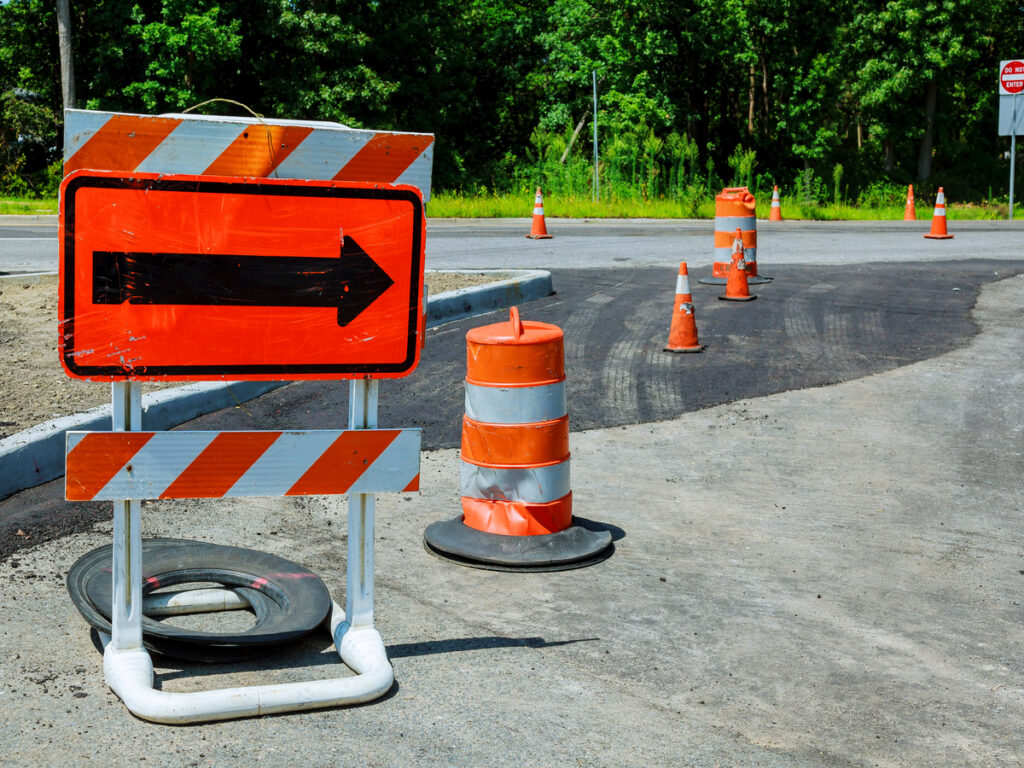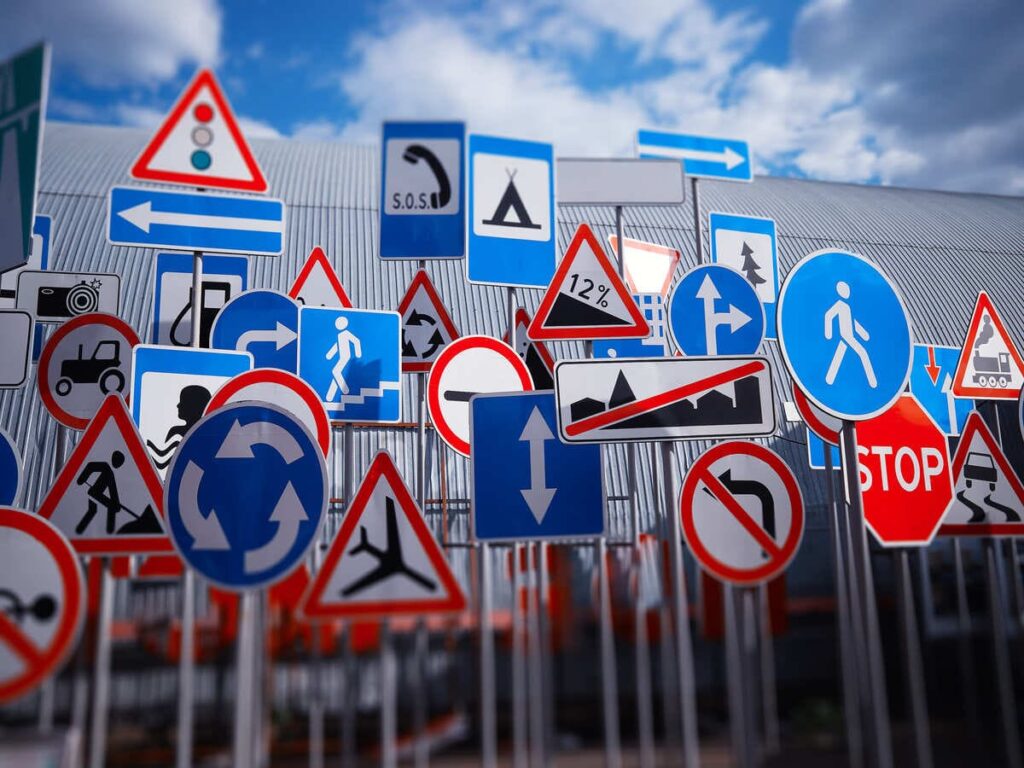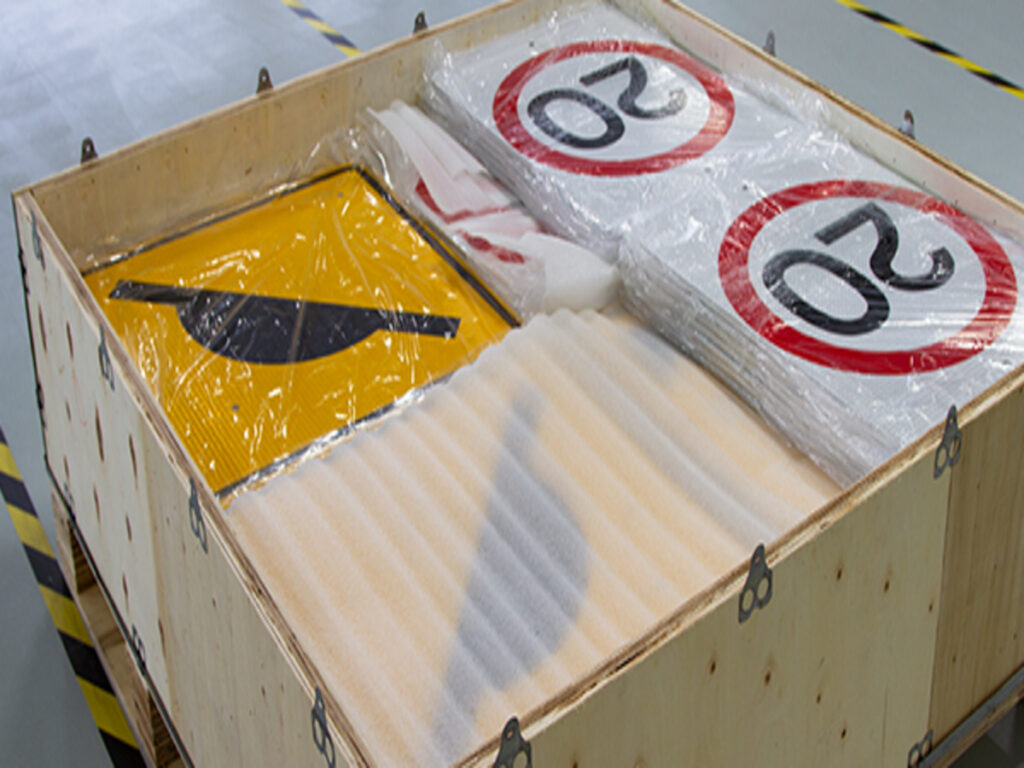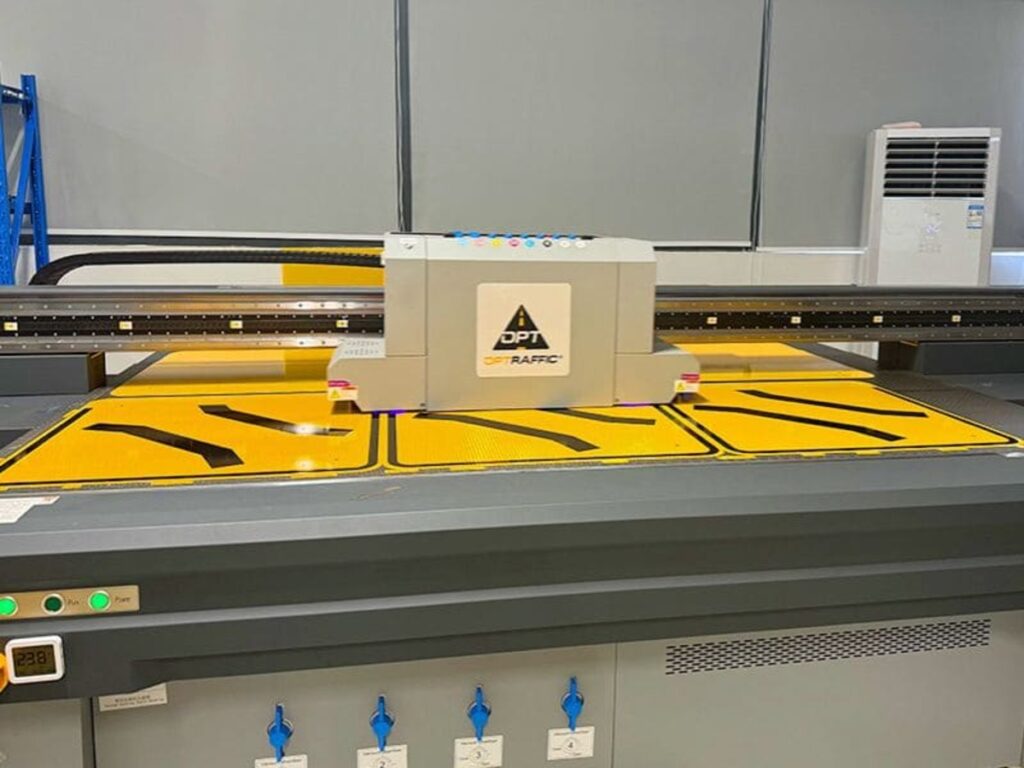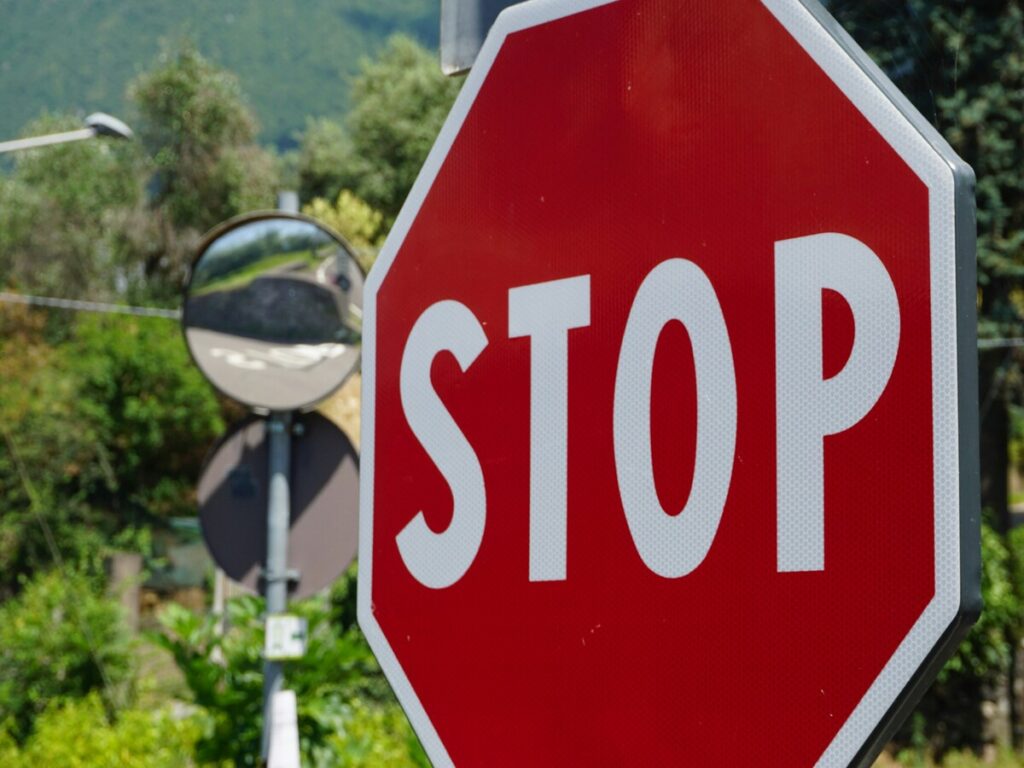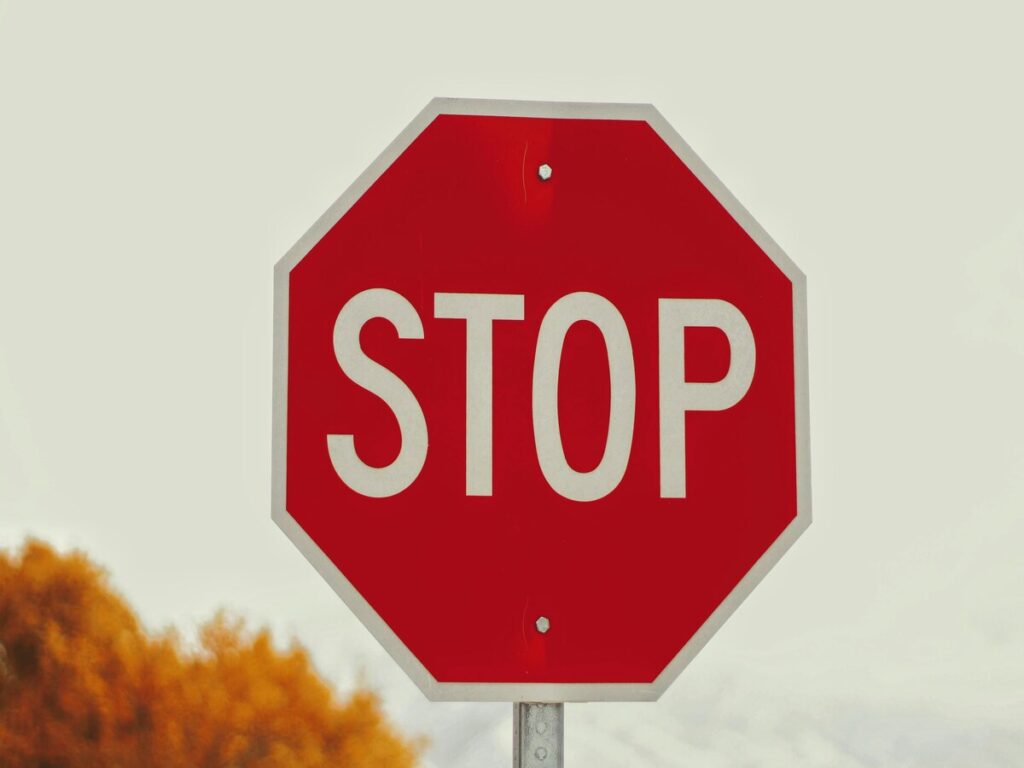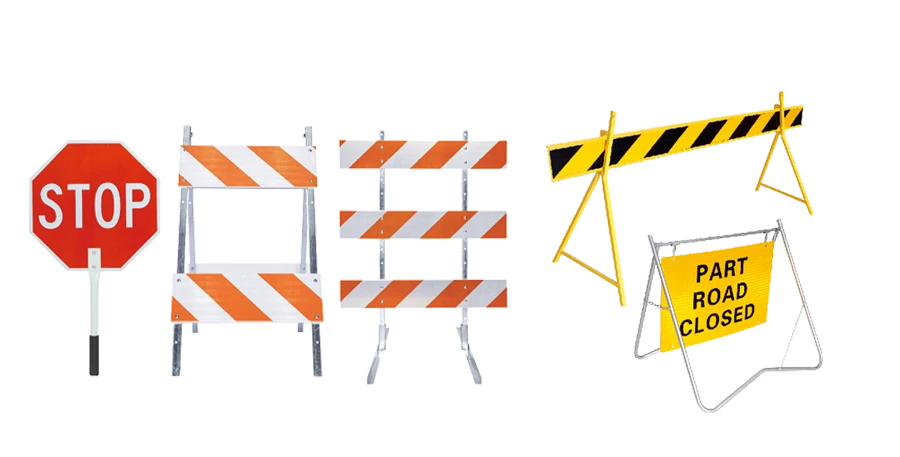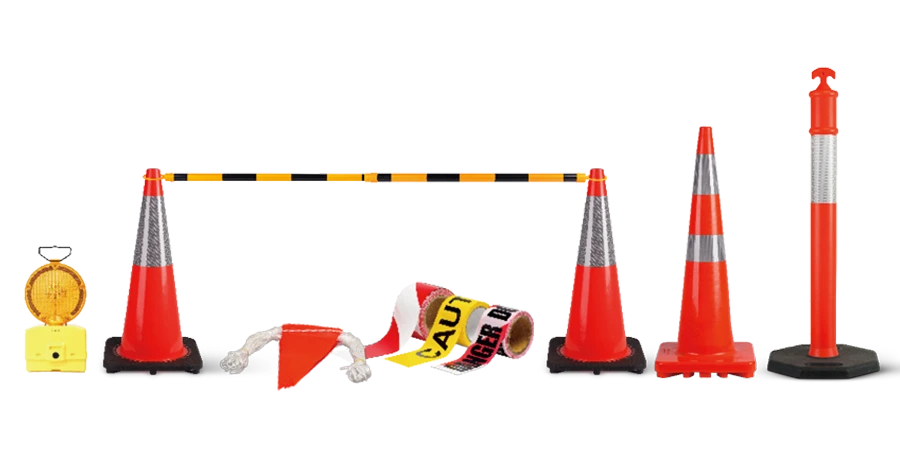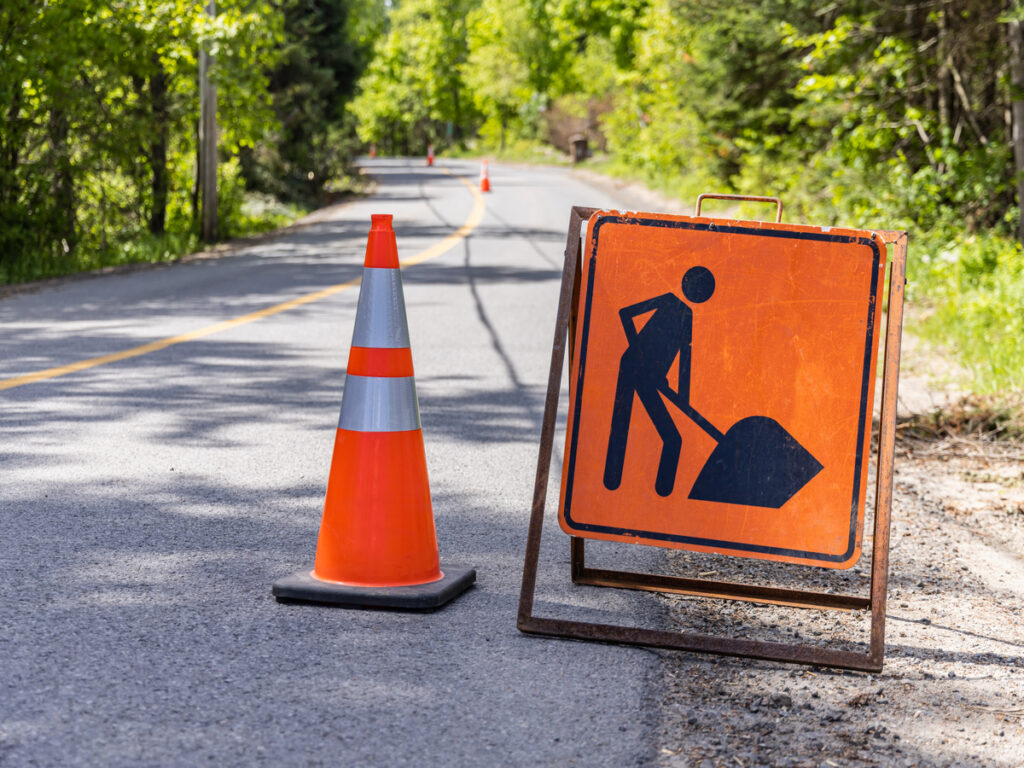
التثبيت الصحيح لافتات الطرق يحافظ على سلامة الجميع. You can stop accidents by using retroreflective signs. These signs help people see better at night. They let drivers see from 90 إلى أكثر 300 أمتار. This lowers accident rates by 25%. If you follow the law and change signs when needed, لن يتم تغريمك. This also keeps your site following the rules. Many companies have problems like missing contractor details. Some use handmade signs. You can stop these problems with good planning and regular checks.
في أوبترافيك, we provide high-quality retroreflective roadwork signs designed for optimal visibility and safety. Our safety signs meet all legal requirements, helping you stay compliant and reduce risks on your site. Explore our range today to ensure proper installation and effective roadwork signage management.
الوجبات الرئيسية
- Use strong T-series signs that reflect light well. Use the right tools to keep roadwork safe. These signs help people see the area day and night.
- Put signs where drivers can see them early. Do not put signs behind things that block them. Make sure the sign size matches the road speed.
- Fix signs tightly with the right posts and anchors. Check bolts and angles so signs do not move. This also stops glare from lights.
- Check signs often for damage and dirt. Make sure people can see them well. Fix any problems fast to keep everyone safe.
- Write down all checks and repairs in detail. This helps you follow the rules and keeps your team safe.
تحضير
Tools and Materials
You need the right tools and materials to put up T-series roadwork signs بأمان. Start with a posthole digger to make holes for the signposts. Use an impact wrench or power drill to fix signs to the posts. A level helps you keep the sign straight. Measuring tape makes sure you put signs at the right distance. Wrenches and a hammer help tighten bolts and keep posts steady. Always wear PPE like hard hats, قفازات, and reflective vests.
ل road sign materials, pick T-series signs made from strong aluminium substrates, usually about .080 gauge thick. This thickness stops the signs from bending or rusting. Signs must have retroreflective sheeting, at least Type I grade, so drivers can see them in any light. UV-resistant inks and protective lamination keep colours bright and safe from weather. You might use high-density polyethylene plastic or vinyl for temporary signs, but these do not last as long as aluminium. Use strong posts, قوسين, and anchor bolts to keep signs steady. Quick-mount systems like cone mounts or magnetic backs help you put up signs fast and safely.
تقييم الموقع
Check the site carefully before you put up any sign. ابحث عن الأشجار, تلال, or buildings that could block the sign. Watch how traffic moves in the area. Put road signs where drivers can see them early and have time to react. Make sure the ground is flat and firm so the sign stands up straight. فكر في الطقس. Wind and rain can make signs fall or hard to see. Pick places where signs stay easy to see in all weather.
For a deeper understanding of how roadwork signs can influence driver behavior and speed in construction zones, تحقق من مدونتنا, كيف علامات الطريق تشكل سلوك السائق والسرعة في مناطق البناء.
Safety and Legal Checks
You must follow strict rules when putting up T-series roadwork signs. المعيار الأسترالي 1742.3:2019 tells you the design, مقاس, مواد, and reflectivity for these temporary road signs. Signs must be retroreflective or lit up so people see them day and night. Use approved materials like strong aluminium and weather-resistant coatings. Put regulatory signs where drivers can see them clearly. Sign sizes change for different roads and speed zones. Councils may want bigger signs near schools or busy roads. Always write down your plans and sign codes. Check temporary traffic control signs often to keep them safe and legal. New rules say warning signs need البرتقال الفلورسنت backgrounds and set minimum heights—1.5 metres for rural roads and 2.1 metres for urban areas.
Roadwork Signs Selection

نوع علامة
You must choose the right T-series sign for your work zone. Each traffic sign has a clear purpose. على سبيل المثال, T1-1 warns drivers about roadwork ahead, while T2-1 tells them to slow down. Look at your site and decide what message drivers need first. If you use too many Roadwork Signs or put them in the wrong place, يمكن للسائقين الخلط. This confusion can slow down traffic and make accidents more likely. You should avoid placing signs near bright billboards or other distractions. Signs must stand out so drivers see them quickly and react in time.
نصيحة: Place Roadwork Signs where drivers have a clear view. Avoid sharp bends or spots with trees and buildings in the way.
If you work on a busy road or a high-speed area, use larger signs. Bigger signs help drivers see the warning from far away. Always match the sign size to the speed and type of road.
For more insights on how to optimize sign placement in high-speed urban environments, تحقق من مدونتنا, إلى أي مدى يجب أن توضع علامات الطرق المقبلة في البيئات الحضرية عالية السرعة?.
Condition and Standards
Check every traffic sign before you install it. Signs must be clean, ساطع, وسهل القراءة. Faded or damaged signs do not work well and can cause confusion. You must follow strict rules for sign quality. The main standards are AS/NZS 1906.1, مثل 1742.2, و 1744. These standards tell you how bright, قوي, and clear your signs must be. AS/NZS 1906.1 covers the مادة عاكسة, so signs stay visible in rain or at night. مثل 1742.2 explains the right size and layout for each sign, based on road speed and distance. مثل 1744 sets the font style and size, making sure every letter is easy to read. إذا لم تتبع هذه القواعد, your signs may not pass inspection. This can lead to safety risks and legal trouble. Always check the height and angle of each sign after you put it up. This keeps your work zone safe and easy to understand.
تحديد المواقع التوقيع
الموضع والوضوح
You must place signs where drivers can see them clearly and early. Always put Roadwork Signs on the right-hand side of the road. This position gives the best view for approaching drivers. في بعض الحالات, you may need to place signs on both sides of the road for extra emphasis. تأكد من أن لا شيء يحجب العلامة, such as trees or parked vehicles. Signs should never sit in areas used by pedestrians or cyclists. If you work at night or in poor weather, use larger signs or add flags and warning lights to help drivers notice them.
نصيحة: Place signs so drivers have enough time to react. Do not put them too close or too far from the work zone.
Distance and Clearance
Correct height and spacing keep signs visible and safe. Use the table below to check the minimum mounting heights and clearances for different settings:
| نوع المتطلبات | Rural Setting | الإعداد الحضري / Where Pedestrian or Parking Movements Occur |
|---|---|---|
| الحد الأدنى لارتفاع التثبيت (bottom of sign to pavement) | 1.5 م (5 قدم) | 2.1 م (7 قدم) |
| الحد الأدنى لارتفاع التثبيت (major sign with secondary below) | 2.4 م (8 قدم) | 2.4 م (8 قدم) |
| الحد الأدنى لارتفاع التثبيت (secondary sign) | 1.5 م (5 قدم) | 1.5 م (5 قدم) |
| Overhead sign clearance | 5.2 م (17 قدم) | 5.2 م (17 قدم) |
| Lateral offset (ground-mounted) | 3.7 م (12 قدم) أو 1.8 م (6 قدم) from shoulder | الحد الأدنى 0.3 م (1 قدم) from curb face |
You should also keep at least 60 metres between each sign in a series. This spacing gives drivers time to read and understand each message.
Orientation
You need to face each sign squarely towards oncoming traffic. This angle helps drivers see the message without glare or distortion. At curves or near travel lanes, use special signs that show the correct direction and number of lanes. على سبيل المثال:
- Use reverse curve signs to warn about lane shifts at bends.
- If two curves are close together, use a double reverse curve sign.
- Make sure the sign matches the road layout, showing the right number of lanes and the correct direction.
Always check that the sign stands straight and does not lean. Adjust the angle if needed so drivers can read it from a distance.
Installing Roadwork Signs
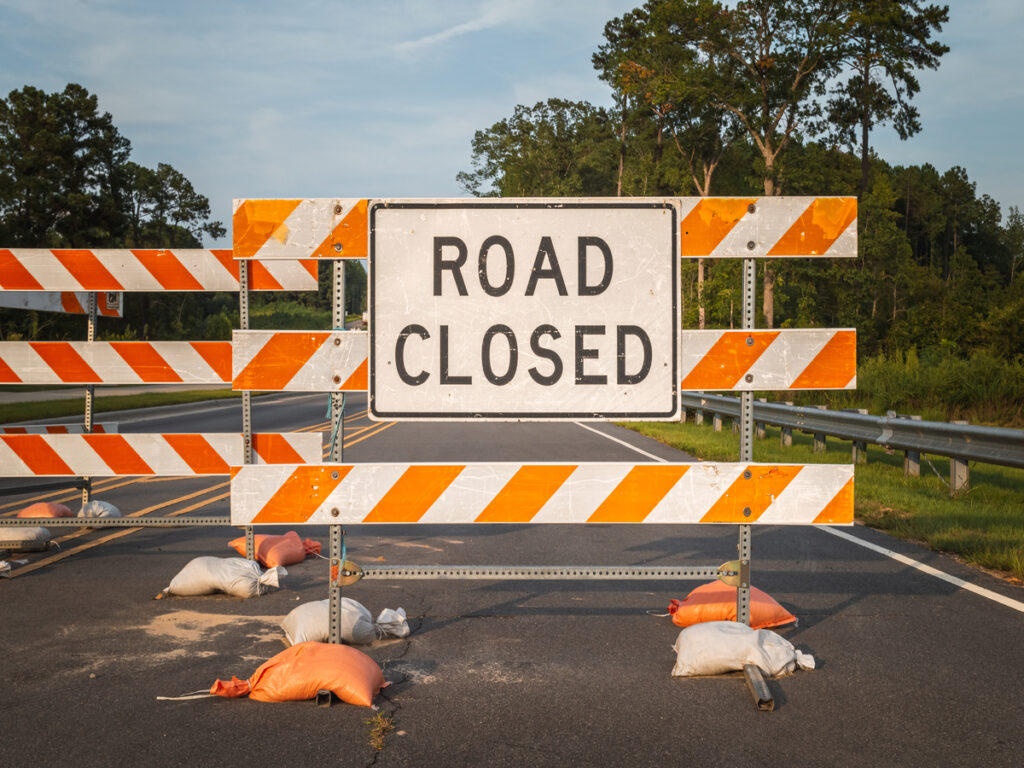
Securing the Sign
You must make sure Roadwork Signs are safe and easy to see. Pick strong metals like aluminium or steel for traffic sign posts and brackets. هذه المعادن تدوم لفترة طويلة ولا تصدأ بسهولة. Choose the right way to anchor the sign for your ground. If the ground is soft, push metal or composite posts into the soil. For hard or rocky ground, set posts in concrete. This keeps the sign steady, even when it is windy.
Here is a table to help you pick the best way to secure your sign:
| وجه | توصية / توضيح |
|---|---|
| مواد | استخدام قوي, weather-resistant metals like aluminium or steel for durability. |
| طرق الربط | Use driven footings for soft soil; use concrete footings for hard or rocky soil. |
| Structural Enhancements | Add support angles, cross-bracing, and anti-vibration fittings for extra stability. |
| Anchor Points | Use reinforced anchor points with base plates and anchor bolts, especially in stormy areas. |
| Safety Bases | Use breakaway or energy-absorbing bases to reduce crash impact. |
| صيانة | Inspect for rust, الشقوق, and loose bolts regularly. Keep a checklist for safety and performance. |
When you put in anchor bolts, check they can hold the sign’s weight. Attach base plates to the concrete so you can check and fix the sign later. For smaller Roadwork Signs, use breakaway parts to make them safer. For bigger signs, use guardrails or barriers to stop accidents.
نصيحة: Always clear away rocks, الأوساخ, and rubbish before pouring concrete. This helps the concrete set well and keeps the sign steady.
Stability and Adjustment
Check all bolts to make sure they are not damaged and are tight. Use a torque wrench to tighten bolts so they do not come loose. This stops the sign from moving when cars go past or when it is windy. For the best fit, use corner bolts with 12-gauge anchors to pull the post straight. If you use 7-gauge anchors, put shoulder bolts at right angles. This locks the post in place and stops it from turning.
Protect the post by following what the maker says. Use steel sleeves or covers to stop rust and damage. If you need breakaway devices, add them as needed. These let the post break safely if a car hits it, which lowers injury risk.
Change the sign’s height and angle to match the rules. In towns, set the bottom of the sign 2.1 متر فوق الأرض. على الطرق السريعة, you might need to go up to 3 metres to keep the road sign above parked cars. Make sure the sign faces traffic so drivers can see it clearly, حتى في الطقس السيئ أو في الليل.
- Check the sign from different places and distances.
- Change the angle to stop glare from the sun or headlights.
- Use reflective materials to help drivers see the sign in low light.
ملحوظة: Take away any rubbish around the base before pouring concrete. Put on post covers to protect the post and help the sign last longer.
You must follow safety rules when you put up signs. Wear high-visibility vests, القبعات الصلبة, and safety boots. Only let trained workers go into the work area. Use cones and barriers to keep cars away while you work. Hold daily safety talks to remind everyone about dangers and safe ways to work.
When you secure and adjust Roadwork Signs the right way, you help keep drivers and workers safe. You also make sure your site follows all the rules.
الشيكات النهائية
تقتيش
You must look at every sign after you put it up. أولاً, check the sign’s surface for marks or cloudy spots. Use a soft brush to clean the lenses so they stay clear. Make sure each sign faces the cars coming towards it. Look at the posts and brackets for rust, الشقوق, or bends. Test all bolts and fasteners to see if they are tight. Check for any damage or if someone has tried to mess with the sign. Open any boxes and look for water or insect nests inside. These can cause problems with the wires. Look at the lighting connectors and make sure they are clean and fixed well. If you use trailer-mounted signs, check the tyres for cuts or holes. Make sure the hitch and safety chains are locked in place.
Regular checks help you find problems early and keep Roadwork Signs safe for everyone.
Visibility Test
You need to check if each sign can be seen from many places. Stand at different spots along the road and look at the sign. Move left and right to see when the sign disappears from your view. This helps you know if drivers can see the sign from the side. Use real backgrounds like trees or parked cars to see if anything blocks the sign. Make sure the sign is easy to see in the day and at night. If you find a problem, change the sign’s angle or height. Do the test again until you know drivers can see the sign from all sides.
Good visibility gives drivers enough time to react and stay safe.
التوثيق
You must write down every check and test you do. Record the date, وقت, and what you found. Write down any repairs or changes you made. Keep these notes in a logbook or on a computer. This shows you followed the safety rules and standards. Good records help you look after the signs and show you care about safety.
| Inspection Step | What to Record |
|---|---|
| Visual Check | Condition and alignment |
| Visibility Test | Angles and distances checked |
| صيانة | Repairs or adjustments made |
| Final Approval | Name and signature of inspector |
Keeping good records protects your team and helps you follow the law.
Maintenance and Removal
يراقب
You must check your signs often during the project. This keeps everyone safe and helps you follow the rules. Start by making sure each sign stands in the right place and nothing blocks it. You should look for signs that lean, يسقط, أو تتسخ. If you see a problem, fix it straight away.
Follow these steps to monitor your signs:
- Check that all signs match the Standard Plans and stand clear of bends or things that block the view.
- Adjust the signs if traffic changes or if you see long queues. Move signs if you need to help drivers see better.
- Assign a team member to watch the signs every day. This person should fix or replace any sign that gets knocked over or damaged.
- Drive through the site after you set up the signs. Do this again at different times to see what drivers see.
- Talk with your team and traffic managers to keep everyone updated about changes or problems.
- Make sure flashing beacons and message boards work well and follow the right message rules.
- Remove old signs and barriers as soon as you finish that part of the work. Do not leave unused signs on the road.
Regular checks help you spot problems early and keep the site safe for everyone.
Safe Removal
When your project ends, you must take down the signs safely. Start by closing the work area to traffic if you can. Wear your safety gear and use cones to mark where you work. Remove the signs in the reverse order you put them up. Take away warning signs last, so drivers know the road is clear.
Store the signs in a dry, safe place. Clean each sign before you put it away. Check for damage and fix or replace broken parts. Keep a record of all signs you remove and store. This helps you find them quickly for the next job.
نصيحة: Always check the ground for leftover bolts or rubbish after you remove the signs. A clean site keeps everyone safe.
You have learned how to put up T-series roadwork signs the right way. Every step is important for safety and following the rules. كما أنه يساعد على تحرك حركة المرور بشكل جيد. Some problems you might face are:
- Not enough time to finish the job
- Dangers that could hurt people
- Tools or machines breaking down
- Signs being stolen or people going where they should not
You can fix these problems by making clear plans and safety checks. Check your tools often and use tracking to watch your signs. Always use trusted rules like the MUTCD to do your best work. Look at your work often and try to get better. Your hard work helps keep the roads safe for all.
التعليمات
What is a T-series roadwork sign?
A T-series roadwork sign warns drivers about roadwork ahead. You use these signs to help people stay safe and follow the rules. كل علامة لديها رسالة واضحة, such as “Roadwork Ahead” or “التفاف".
How often should I check roadwork signs during a project?
You should check your signs every day. ابحث عن الضرر, الأوساخ, or anything blocking the view. Fix problems straight away. Daily checks help you keep the site safe and follow the rules.
Can I reuse T-series roadwork signs for different projects?
نعم, you can reuse these road work signs if they stay in good condition. Clean the signs before storing them. Check for damage or fading before using them again. Always follow the latest standards.
What should I do if a sign gets damaged or stolen?
Replace the road safety sign as soon as possible. Report stolen signs to your supervisor or local council. Keep spare signs ready for quick changes. Quick action keeps everyone safe.
Do I need special training to install roadwork signs?
نعم, you need training to install roadwork signs safely. Training helps you follow the rules and use the right tools. You also learn how to keep yourself and others safe on site.

